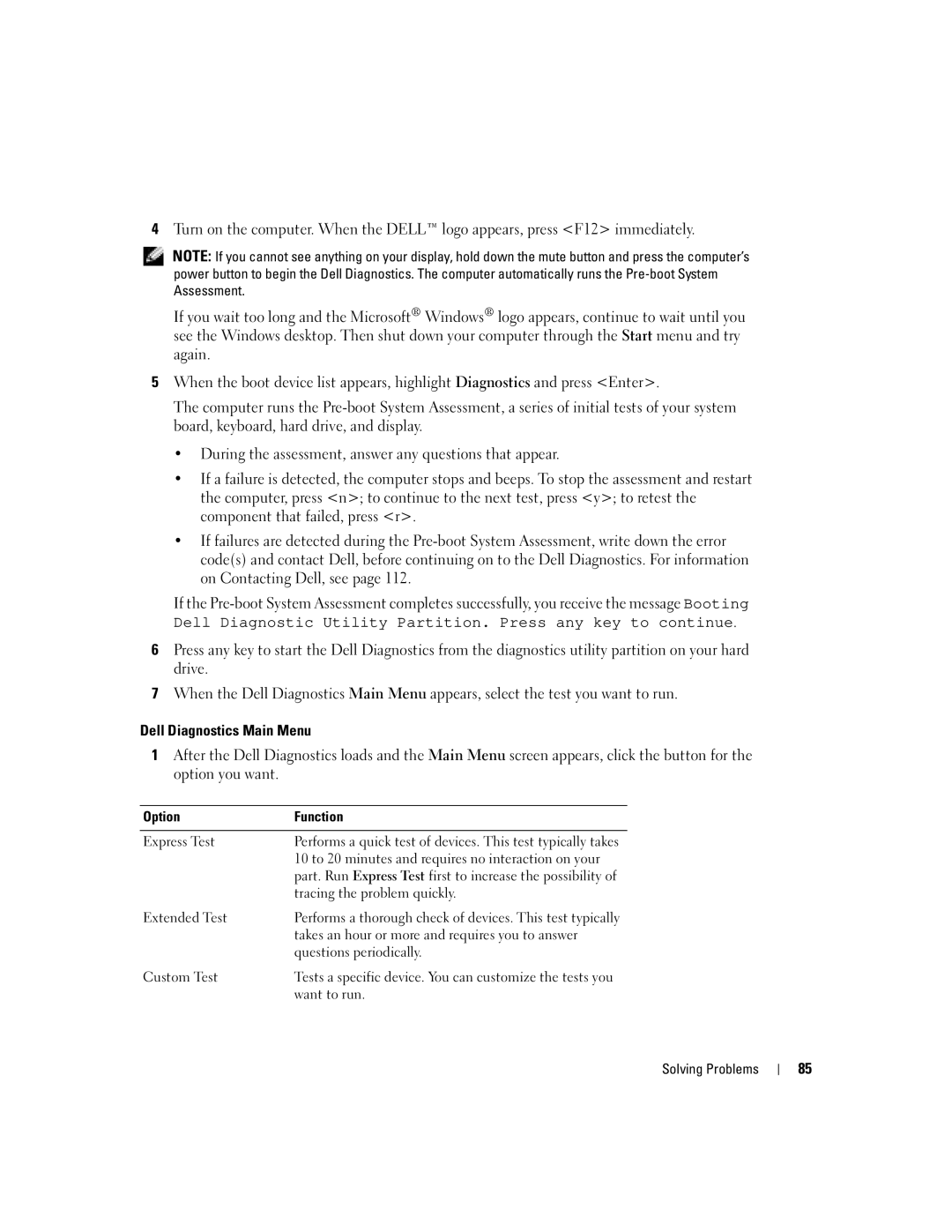
4Turn on the computer. When the DELL™ logo appears, press <F12> immediately.
NOTE: If you cannot see anything on your display, hold down the mute button and press the computer’s power button to begin the Dell Diagnostics. The computer automatically runs the
If you wait too long and the Microsoft® Windows® logo appears, continue to wait until you see the Windows desktop. Then shut down your computer through the Start menu and try again.
5When the boot device list appears, highlight Diagnostics and press <Enter>.
The computer runs the
•During the assessment, answer any questions that appear.
•If a failure is detected, the computer stops and beeps. To stop the assessment and restart the computer, press <n>; to continue to the next test, press <y>; to retest the component that failed, press <r>.
•If failures are detected during the
If the
6Press any key to start the Dell Diagnostics from the diagnostics utility partition on your hard drive.
7When the Dell Diagnostics Main Menu appears, select the test you want to run.
Dell Diagnostics Main Menu
1After the Dell Diagnostics loads and the Main Menu screen appears, click the button for the option you want.
Option | Function |
|
|
Express Test | Performs a quick test of devices. This test typically takes |
| 10 to 20 minutes and requires no interaction on your |
| part. Run Express Test first to increase the possibility of |
| tracing the problem quickly. |
Extended Test | Performs a thorough check of devices. This test typically |
| takes an hour or more and requires you to answer |
| questions periodically. |
Custom Test | Tests a specific device. You can customize the tests you |
| want to run. |
Solving Problems
85
